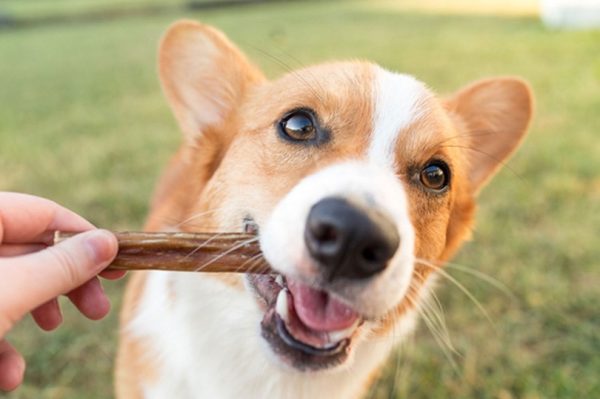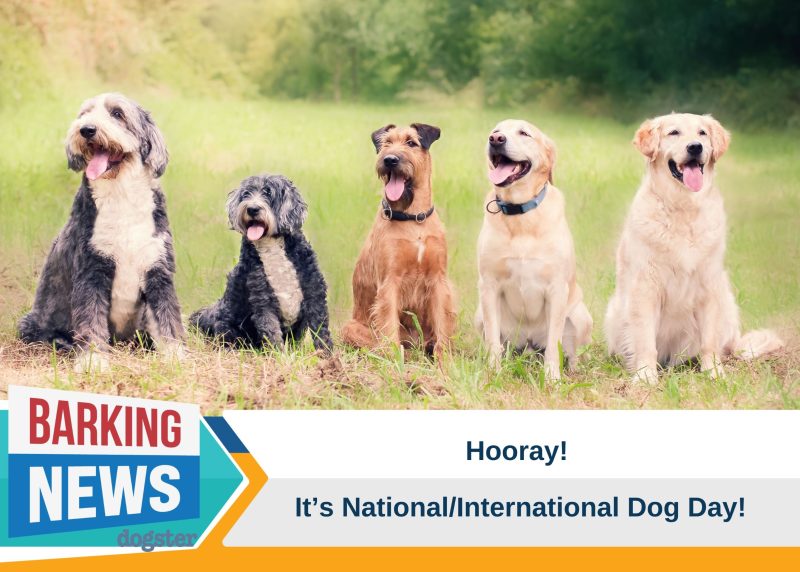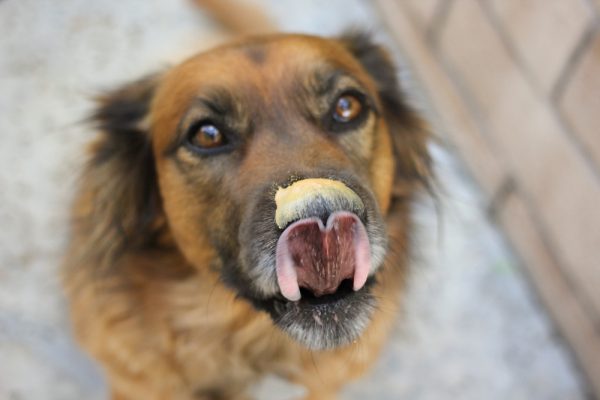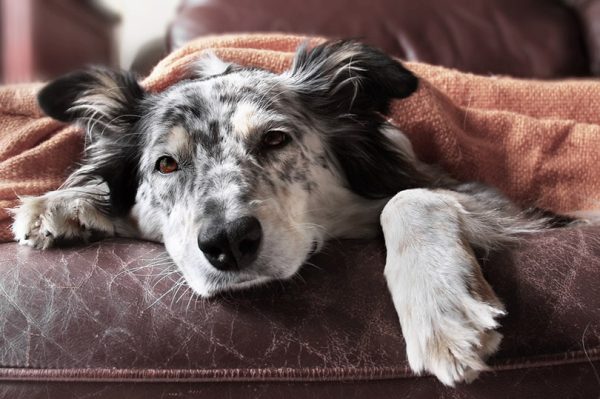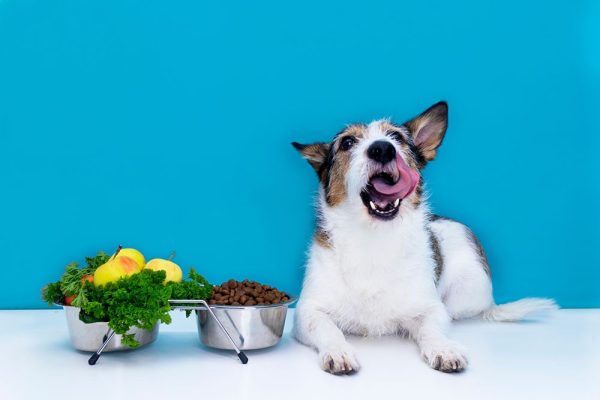In this article
View 8 More +One of Finland’s five national dog breeds, the Lapponian Herder was originally used to both herd and guard reindeer. Having a mid-length coat of fur, this medium-sized dog is a high-energy herder. If your property has a spacious backyard, the Lapponian Herder will have plenty of places to run and play. If you don’t mind barking sounds, this dog will get quite vocal, but it will thrive if it has a job to do.
Breed Overview
Height:
17-21 inches
Weight:
65-80 pounds (male), 60-75 pounds (female)
Lifespan:
12-14 years
Colors:
white, tan, brown, gray, black
Suitable for:
active families, houses that have spacious yards, herding or dog sporting activities
Temperament:
loyal & loving, intelligent, easy to train, friendly, adaptable, energetic
The Lapponian Herder comes in various colors, including gray and brown combinations, black with lighter undercoats, and white or tan markings. This dog breed is built on its independent nature and its ability to have fun. They are vigilant watchdogs and super intelligent, but also eager to please their owners. Alongside herding, other dog sports like frisbee tossing and agility competitions (obstacle courses) can easily motivate Lapponian Herders to perform. Being friendly and docile, you can trust this dog breed to have around you and your family.
Lapponian Herder Characteristics

Lapponian Herder Puppies
The Lapponian Herder has an average litter size of 5 to 8 puppies. There is a very low risk involved when buying a Lapponian Herder puppy. It is critical to remember that these puppies need socialization starting at an early age, and training them as early as possible would be ideal.
If you happen to be a farmer and you have various kinds of livestock, you will need a competent herding dog to corral sheep or chickens. The Lapponian Herder would be an excellent choice for this kind of job. Chances are good that since this dog breed could successfully herd reindeer in times of yesteryear, it can also herd various kinds of modern farm animals.

Temperament & Intelligence of the Lapponian Herder 🧠
The Lapponian Herder has a highly respectable temperament and is very intelligent. This dog breed can be easily taught and trained, and they can learn and memorize commands in a range of 5 to 15 repetitions. At least 85% of the time this breed will obey your first command. Lapponian Herders are generally very patient with their owners as they don’t often react to any rough handling. However, they can be reserved when they are around people they don’t know.
Are These Dogs Good for Families? 👪
If you have children in your home, you don’t need to worry about the Lapponian Herder getting jealous as it is natural for them to form great bonds with humans right away. Remember that these dogs crave attention, and they don’t tolerate being ignored, so they welcome children giving them attention.
If you have a family member who suffers from allergies, it may not be beneficial to have a Lapponian Herder. This dog breed doesn’t do well around people who are allergic because it can cause an allergic reaction. The type of coat the dog has isn’t relevant to this issue. It is the dander, the flakes on the dog’s skin, or the saliva the dog carries that can cause an allergic reaction. If you are looking for a hypoallergenic dog for your family, the Lapponian Herder isn’t the right choice.

Does This Breed Get Along with Other Pets? 🐶 😽
Lapponian Herders are generally friendly dogs, so if they get along well with you and your family, they will most likely get along well with other pets. They are not known to be initially aggressive when they are first introduced to a family that has other pets. Being calm and having self-control make up key parts of their personality, so they will generally mind their business when they are around other animals. At an early age, this dog breed can act dominant around other dogs because of its herding mentality, but this behavior can be curbed with thorough socialization and training.

Things to Know When Owning a Lapponian Herder:
Food & Diet Requirements 🦴
The Lapponian Herder would benefit from having high-quality dog food. Commercially manufactured dog food is acceptable, but home-prepared dog food is more preferred. If you put this dog on a diet it should be appropriate to the age of the dog, whether it is a puppy, adult, or senior. Be mindful of the calorie consumption rate of the Lapponian Herder because like other dog breeds, it is prone to becoming overweight. For example, if you give your dog treats as a reward for good behavior in training, make sure you set a limit for treats each day. Too many treats given to a dog can result in obesity.
The average daily food consumption of Lapponian Herders should be 2.5 to 3 cups of high-quality dry food each day, divided into two separate meals. Some human foods are safe for dogs to eat, such as bacon, beef, fish, and meat. Many other foods are not safe for dogs, which must be avoided. You should also provide your dog with clean, fresh water at all times.
Exercise 🐕
When it has a job to do, the Lapponian Herder will be at its peak performance. Whether you have it herd farm animals, routinely train it for other important tasks, or simply playing games with it, the Lapponian Herder will thrive. There are many dog sports the Lapponian Herder can participate in, such as frisbee tossing, agility, barn hunt, search and rescue, conformation, rally, and dock diving. There is one word of warning to consider if this dog doesn’t get enough exercise. Lapponian Herders can become destructive if they feel like they are not getting enough stimulation both physically and mentally.
Training 🎾
It is generally easy to train a Lapponian Herder because you are dealing with a social breed. Lapponian Herders want to be challenged and stimulated with things to do, and they can’t stand being left alone for too long a time. While you may need to be patient with the training process, the consistency of your teaching will set in for the dog as it will learn commands it will need to obey to be rewarded. Developing a clear routine in how you train this dog breed will be key.

Grooming ✂️
The fur of a Lapponian Herder consists of a thick double coat. The undercoat will be shed either once or twice a year, typically during the spring and fall seasons. You will not have to be concerned about tangled fur since this dog’s coat is smooth, but occasional baths and brushing are recommended. The coat will stay free of parasites and remain healthy and shiny if a consistent grooming protocol is in place. Nails should be trimmed regularly when necessary, with either a nail clipper or grinder. This will help prevent splitting, cracking, and overgrowth in the nails. Also regularly check the ears so that there isn’t any buildup of wax or debris, which can lead to infections. Lastly, schedule a time to brush the dog’s teeth to avoid dental diseases.
Health and Conditions 🏥
The Lapponian Herder is generally a hardy and healthy breed. However, like every other dog breed, it is prone to developing particular health problems. Most conditions that this breed can develop are common, while other conditions are rarer among dogs.
- Cataracts
- Skin Allergies
- Von Willebrand’s Disease
- Hip Dysplasia
- Bloat
Minor Conditions:
- Cataracts: In most cases, it is the genetics of the dog that allow it to inherit cataracts. Generally referred to as cloudiness in the lens of the eye, cataracts can appear in either complete or partial opacity. There are other potential causes for cataracts, such as diabetes mellitus, old age, and exposure to either radiation or toxic substances like xylitol and ethylene glycol.
- Skin Allergies: A dog’s skin can be irritated and inflamed by three syndromes. Eosinophilic plaque is made up of ulcers that are located either on the thighs or the abdomen. Eosinophilic granuloma is a lesion that contains eosinophils usually found behind the thighs, on the face, or inside the mouth. Indolent ulcers are lesions that are most often located on the upper lip.
Serious Conditions:
- Von Willebrand’s Disease: This is an inherited blood disorder that may affect puppies. A lack of proteins in the platelets is the main enabler of this disease. By not receiving enough proteins, the platelets won’t be able to clot correctly, which can result in bleeding problems in the dog. While bleeding is the main indicator of Von Willebrand’s Disease being a possible condition, bruising on the dog’s skin is also a notable symptom.
- Hip Dysplasia: As dogs enter their growth stage, they can develop hip dysplasia. This is where the hip joint of the dog loosens, which can cause pain and dysfunction. If your dog has this condition, its cartilage and hip bone will start wearing down as the dog grows. Arthritis is the long-term result of hip dysplasia, along with muscle atrophy and limitations in mobility.
- Bloat: Bloating occurs when a dog’s stomach is filled with gas. When the stomach expands, pressure is applied to the diaphragm, which makes it more difficult for the dog to breathe. Bloating can occur at any time in a dog’s life, but larger dog breeds like Great Danes can easily suffer from this condition. This can also happen in Lapponian Herders, but bloating is less likely to occur because of their medium size. It is best to watch how frequently your dog eats and drinks because excessive overeating and drinking can cause bloating.
Male vs Female
There are no significant differences between male and female Lapponian Herders aside from their average sizes. The largest male Lapponian Herder is normally 5 pounds heavier than the largest female. The average height of males is anywhere from 19 to 21 inches. In contrast, the average height of females is anywhere from 17 to 19 inches.

3 Little-Known Facts About the Lapponian Herder
1. Near Extinction
Lapponian Herders were nearly extinct towards the end of World War II. However, this breed would be re-established and developed from herding breeds like Spitz dogs in the Nordic region.
2. Equality with the Finnish Lapphund
Lapponian Herders gained acceptance to the breed register in the 1950s. It was at this time that these dogs were considered to be the same breed as Finnish Lapphunds. On October 12, 1966, the Lapponian Herder would be recognized as a separate herding breed.
3. Not a Biter nor a Fighter
There is a very low possibility of getting bit by a Lapponian Herder when you interact with one for the first time. Historically speaking, this breed has never been used for combative purposes, so most Lapponian Herders are not fighters.

Final Thoughts
If you are looking for a very playful and energetic dog to perform various tasks out of the house, the Lapponian Herder is one of the best candidates. If you crave interaction with dogs, this dog breed will keep you on your toes and won’t disappoint. It doesn’t take much to satisfy the needs of a Lapponian Herder, but this is a dog breed that will constantly remind you of those needs. While this dog breed is enthusiastic and exerts a lot of energy throughout the day, it is calm and relaxed when it needs to be. If you live in a colder climate area, the Lapponian Herder will adapt extremely well to those weather conditions. The Lapponian Herder is overall a great dog to own, and it won’t give you much trouble if you give it the attention it needs.
- See Aslo: 10 Best Organic Dog Foods
Featured Image Credit: Emmanuelegrimaud, Shutterstock






